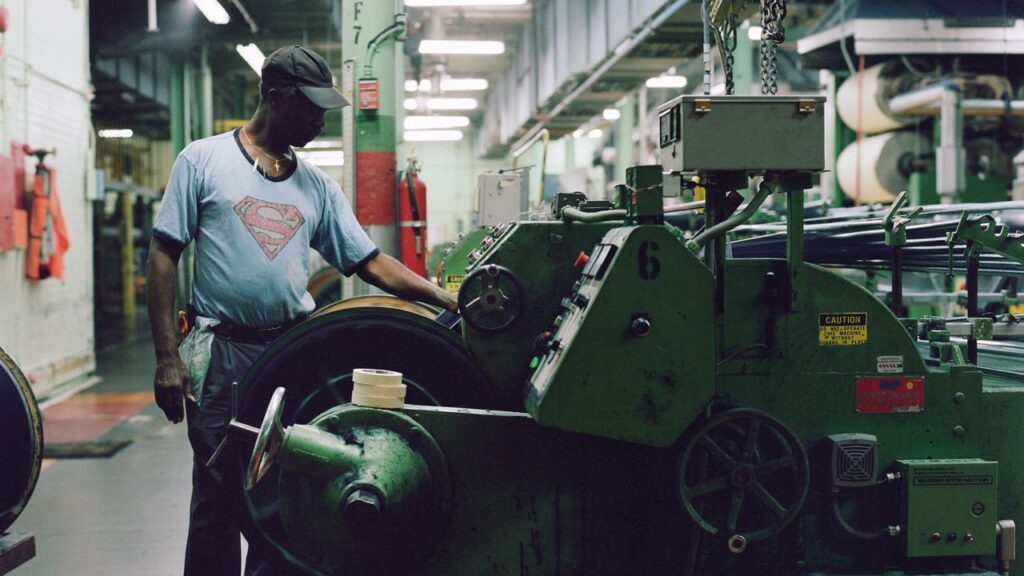For anyone who’s serious about selvedge denim, the name White Oak carries a lot of weight. Founded in 1905 by Cone Mills—the primary denim supplier to Levi’s, Wrangler, Lee, and countless other heritage brands for much of the 20th century—the Greensboro, NC plant and its legion of fabled Draper X-3 shuttle looms played a significant role in shaping the look and feel of traditional selvedge jeans.
When photographer Matt Sharkey got wind that the mill was shutting down at the end of 2017, effectively ending industrial-scale selvedge denim production in America, he grabbed a medium-format camera and headed for Greensboro. The photos he took on that visit and two subsequent ones would become American Denim: The Supposed Final Days and Resurgence of a Manufacturing Icon, a new book that documents the final days of White Oak.
While American Denim focuses mostly on the plant’s transition from bustling factory to derelict industrial site, the book’s final section is dedicated to the handful of passionate preservationists at the White Oak Legacy Foundation and Proximity Manufacturing Company who are keeping the tradition of American selvedge denim alive. We spoke to Sharkey about his new book, his experiences in Greensboro, and why White Oak’s legacy matters.
GQ: How did you first become aware of White Oak?
Matt Sharkey: I started my own marketing consultancy in 2000, and Levi’s was a major client at that time, so that was my first real education about White Oak. Then, in 2016, I was consulting for Chrome Industries, and they were working on a collection of denim with White Oak, so I went out to Greensboro to film there. That was my first interaction with the factory. But even prior to being at the factory, I’d known Tony and Pete, the owners of Tellason, for 15-plus years, and their denim was entirely woven at White Oak.


